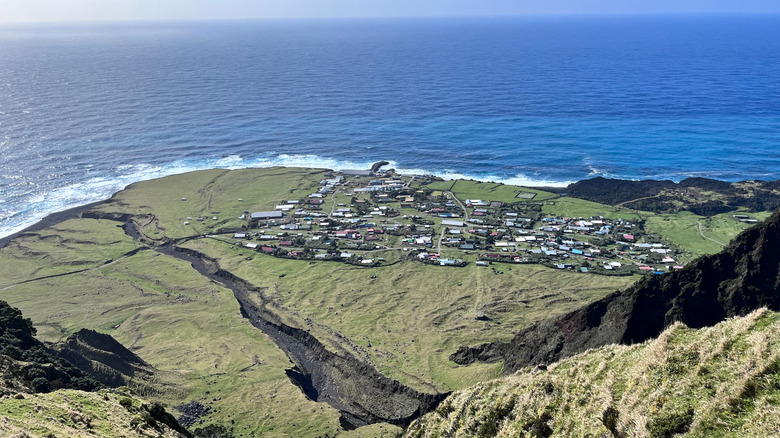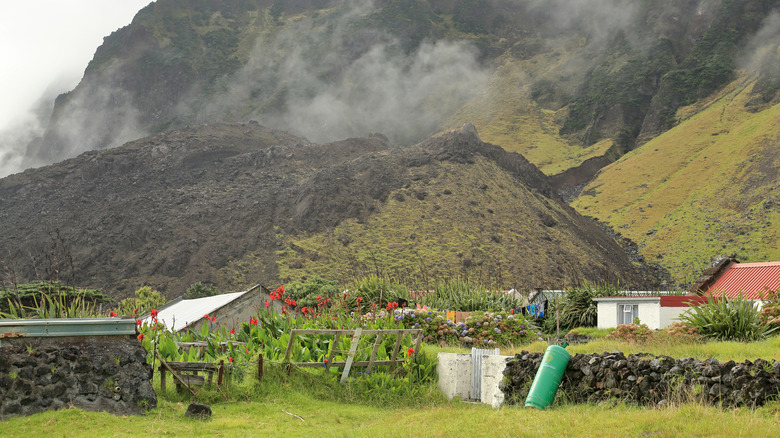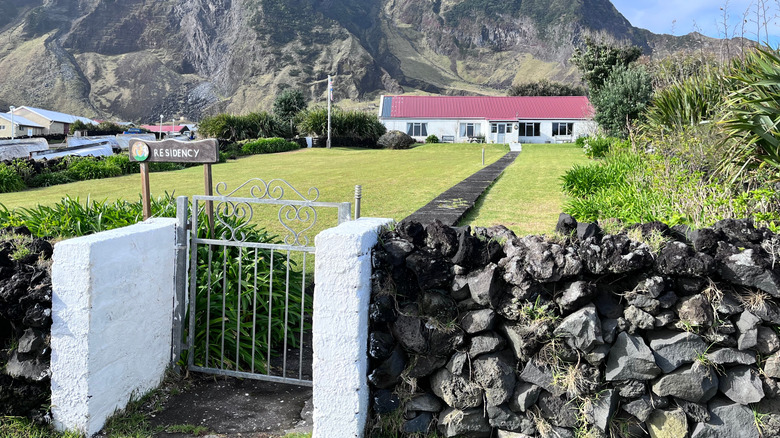The World's Remotest Inhabited Island Has Hiking, Fishing, And Even Golf (But No Hotels Or Restaurants)
Though many dream of vacationing in remote places to turn off the buzz of their everyday lives, most don't dream of a place where it's so remote, it takes nearly a week of navigation on a ship to get to, and the nearest neighbors are thousands of miles away. Tristan da Cunha is an island in the middle of the South Pacific Ocean and is one of the most isolated islands on Earth. It's about 1,750 miles from South Africa and is home to only about 250 people.
To get there, plan on spending a year of planning and up to a week on the open sea. There are only 10 round-trip ships each year to and from the island and Cape Town, South Africa — one of the world's "Most Desirable Tourist Destinations." Of the three ships that make these journeys, each carries 12 or 40 passengers each way, along with mail and cargo. A round-trip ticket for an adult costs anywhere from $500 to $1,000. There are varying rates for those who live on the island, who pay a discounted rate, and for children.
Even if you do get a limited spot on one of the vessels, schedules change depending on the weather. Visitors are also required to show a return ticket, health insurance that includes medical evacuation to Cape Town, sufficient funds, and permission to visit from the local government. The island is part of the British Overseas Territories, so the official language is English and the currency is the British pound.
What to do on Tristan da Cunha
Tristan da Cunha has a few things to do, should you visit this unique place. Fishing is a popular activity and a major part of their economy, and you'll need to get a permit that costs £50. They are known for their crawfish, or "Tristan Rock Lobster," which is fished then exported all over the world to be served in restaurants across the U.S., Japan, and China. While on the island, you can eat fresh crawfish caught the same day.
Tristan da Cunha also offers an unique opportunity for hikers: a path up a volcano. The 1961 Volcano, named after an eruption in 1961, is no longer active, so you can walk up the volcano through lava fields and visit the Thatched House Museum, a traditional house made from rock and locals wearing historic clothing. Next to the volcano lies Volcanic Park, which offers picturesque views, benches, and picnic tables to enjoy the day.
Another unique activity you can do on the island is golf. There is a Tristan da Cunha Golf Club, and you can book a package directly with the tourism bureau which includes a golf tie, certificate, score card and a play on the course for £20. They even have an annual Open Golf Championship. What makes this course so unique is that it was established 40 years ago in a cattle pasture surrounded by volcanic boulders.
Where to stay and eat if there are no hotels or restaurants
Tristan da Cunha has no hotels or restaurants. So, how do visitors visit the island? It involves careful planning. Tourists must make special arrangements to stay with locals in guest houses throughout their main city of Edinburgh of the Seven Seas.
You can arrange a homestay – a type of lodging that offers a more authentic, affordable vacation anyway – with a family that provides your accommodation, three meals, and laundry for £65 per person per night. There are also 11 guest houses on the island that cost £25 per person per night plus gas and electricity for self-catered options, and catered options are available for the same price as a home stay. There are special accommodations too, like staying in the Traditional Thatched House Museum for one night only, for £100 for two people, which includes coffee and tea, candles, sleeping bags, and a traditional Tristan cooked meal.
All of these arrangements are made through the Tourism Department directly, who pairs visitors with guest houses to ensure fairness, its tourism website states. There is one small place to eat, called Cafe da Cunha, which is inside the tourism office and post office. It serves crayfish sandwiches and coffee.


